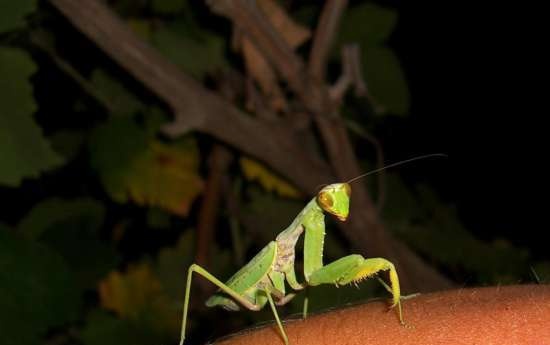|
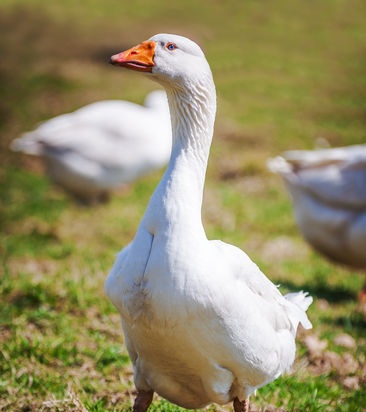 It happens that some living creature, by coincidence, becomes a common favorite, a kind of distinctiveness of a given area. It happens that some living creature, by coincidence, becomes a common favorite, a kind of distinctiveness of a given area.
In the center of the Icelandic capital - the city of Reykjavik - there is a small lake, which in winter never completely freezes due to the inflow of hot groundwater. This lake was chosen by wild geese and ducks. The Icelanders feed them, and the birds fearlessly swim up to the people: they "understand" that they are completely safe here. And in the interior regions of the country, where geese and ducks are hunted, the same birds immediately rise on the wing when a person approaches.

The attraction of the Summer Garden in St. Petersburg, since the time of Peter the Great, is the snow-white handsome swans. It is not difficult to imagine how alarmed the caretakers of the garden were when four birds disappeared from Karpiev Pond on one of the white nights of 1972. The swans got excited, hearing the cries of their wild relatives in the air, left the pond and walked overland to the Swan Canal - an artificial channel leading to the Neva.
The river militia began to catch the fugitives. The birds were found already in the Gulf of Finland. For six hours, a convoy of militia boats accompanied the swans through the canals of Leningrad to their place of permanent residence. Birds were carried from the Swan Canal into the pond by hand.

Gemina's duck, which lived in St. James's Park, gained wide popularity in London. She regularly walked with all her brood across the street to Buckingham Palace Park. Maybe the grass was softer there, maybe Gemina was attracted by the opportunity to splash in the pool there - who knows! But here's what is curious: for the entire duration of the duck procession, traffic along the street was suspended. For added safety, a police officer accompanied Gemina with the ducklings.
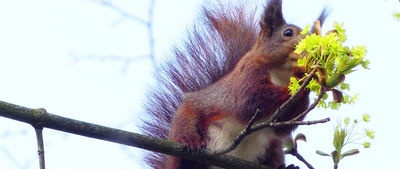
In the Austrian city of Graz, another attraction is the Ghanzi squirrel. She lived in a city park and enjoys everyone's love. Every kiosk in town sells a photo of a furry celebrity. Vending machines are installed in the park - whoever wants to feed Ghanzi with his own hand puts a coin into the machine and receives a bag of food in return.
The residents of the capital of the Democratic Republic of Vietnam, Hanoi, are proud of the giant turtle that lives at the bottom of the Lake of the Returned Sword.
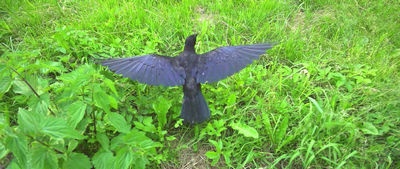
Some time ago, visitors to the beach in the Croatian seaside town of Trogir were entertained by Tom's crow. Having received a coin from someone, he immediately took it in his long beak and flew ... to the butcher for a piece of meat.
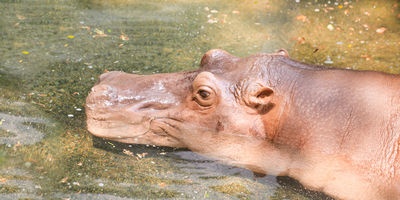
Shrouded in mystical mystery was the glory of the wandering hippopotamus Hubert. On his famous journey from Swaziland to the South African Union (now South Africa), he set off in the early forties of our century. The thick-skinned wanderer walked an average of one and a half kilometers a day and in two and a half years covered no less than 1600 kilometers.
And it had to happen that Hubert's appearance in the villages coincided several times with the rain - a real blessing in an area with an arid climate. Superstitious people began to regard the restless hippopotamus as the "god of rain." In many areas, the population gave the traveler a festive reception, treating him with sugar cane and vegetables. And since Hubert visited not only farms and settlements, but also appeared on the streets of large cities, his popularity increased incredibly. Newspapers and radio vied with each other about the location of the idol and his proposed route. It is easy to imagine the grief and rage that gripped the population of the entire area after poor Hubert was unknowingly shot by some farmer!
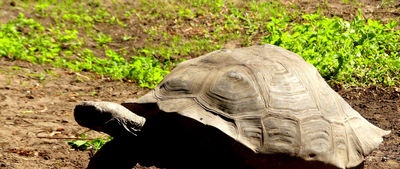
Unlike the fate of the wanderer hippo, the famous turtle from the islands of Tonga Tui Malila can serve as an example of amazing longevity.
During his voyage, an English navigator James Cook visited, by the way, one of the islands of the Galapagos archipelago. Here the sailors rested, stocked up on fresh water, and at the same time took on the ship various local animals, including several huge elephant turtles, which are not found anywhere else.
Having then sailed to the islands of Tonga, Cook and his companions were extremely friendly received by the natives. The islanders had to be thanked for the warm welcome, and the captain presented the local ruler with a living wonder. He was so pleased with the gift that he elevated the turtle to the rank of the leader of the tribe, giving her the name Tui Malila. At the same time, a multi-room palace was built especially for a foreign woman, in which she lived for almost two hundred years after visiting the Cook Islands. During such a time, even with the most peaceful life, a lot can happen. Tui Malila lost one eye, a horse's hoof damaged her shell, twice she had a chance to get out of the flames of fires. Despite the trials of fate, the turtle died a natural death; it happened in 1970.

Once a storm threw a pelican on the Greek island of Mykonos, who was exhausted in the fight against the elements. The inhabitants of the island showed a lively participation in the fate of the bird in distress. They gave shelter to the pelican, began to feed it, and helped to "get back on its feet." The grateful Petros (this is how the bird was christened) never left the island since then and in a short time gained extraordinary popularity. The image of Petros appeared on postcards and envelopes, on wrapping paper.
It so happened that the inhabitants of the neighboring island of Tinos, hearing about this, inflamed with black envy towards the happy owners of the tame pelican. The Tino people seized the moment and stole a living relic from Mykonos. What happened next? The destroyers, armed with anything, insulted in their best feelings, boarded the boats and went to rescue the pet from captivity. The bloody skirmish would not have been avoided if the authorities had not intervened in time. Petros was returned to the owners, and to celebrate, they organized a two-day party.

The inhabitants of the Indian state of Gujerat experienced the death of a tame lion named Tilia Maharaj as a great loss. The unusually complacent king of animals lived on the territory of the Gir forest reserve and for several years served as the main reason for the pilgrimage to the reserve for thousands of tourists, including foreign ones. Everyone wanted to look at the humble beast, which allowed himself to be photographed as much as he wanted and from any distance. The tame lion's fame in particular increased after he saved the forester from the attacking tigress, violently pounced on her and chased her away.
With the special purpose of perpetuating the memory of the famous lion, the Ministry of Posts and Telegraph of India issued a postage stamp with his image.
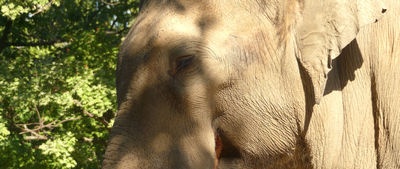
Until recently, the pride of the inhabitants of Kenya was a wild elephant named Ahmed. He was called "the king of elephants", and there was a reason: Ahmed had the largest tusks among all his relatives living today.
In 1970, Kenyans were agitated by the news that two Americans were equipping a large expedition with the special purpose of killing the "king." In defense of Ahmed, the nature conservation society and the world's largest zoologists raised their voices. And the President of the Republic of Kenya, Jomo Kenyatta, issued a special decree by which he declared himself the patron of Ahmed. From now on, anyone who dared to raise a hand against a celebrity elephant was subject to trial to the fullest extent of the law. To protect Ahmed from the encroachments of poachers, a special detachment of gamekeepers was created.
The "king of elephants" did not die at the hands of poachers; he died of old age at the age of 75. His remarkable tusks (3 meters long and 30 kilograms each) are placed in the national museum by order of the president.
Before the duck Gemina, car drivers apply the brakes warning ...Squirrel Ganzi has no end to those who want to treat her with nuts ... Because of the pelican Petros, an acute conflict flares up between the populations of the two islands ... Tilia Maharaj, who has acquired immortality, looks at us from a postage stamp ...
And here are some other facts that the press reported at different times. IN Budapest trying to acclimatize, to decorate parks, the South American macaw parrots ... The London City Council approved a project to build a farm for breeding butterflies (by the way, several species of Lepidoptera are protected by law in this country). Three swallows, frozen to death, were found on the streets of Vienna and urgently delivered by plane to a more convenient starting point for a flight - to the Greek capital Athens ...
According to special decisions of the Moscow City Council, about a thousand wild ducks, geese and swans have been settled on fifteen capital ponds (the ponds of the zoo are not taken into account) ... Egyptian turtles were brought to Tashkent for acclimatization ...
The artist V.S.Grebennikov, engaged in interesting experiments with bumblebees at his leisure, reflects: “I am also attracted by such a picture ... flower beds in the center of a big city, and on the flowers there are large, bright, velvet bumblebees. In my opinion, it is not only beautiful: a small particle of almost forgotten by us wild nature, a piece of forest life so far from us now ... "
Comparing these disparate messages, one involuntarily thinks about the deep inner connection that unites them. Jawaharlal Nehru, a prominent statesman of India, has a characteristic statement: “Life would be boring and colorless if there were no beautiful animals and birds around us that delight our eyes and amuse us”... Let's add to this quote one more, from the book of Professor Bernhard Grzimek "They belong to everyone": “Our great-grandfathers lived in villages among horses, cows, chickens and geese, or in some wilderness where hares, foxes, wolves, deer and elks were in abundance. Never before has such a large part of humanity lived so isolated from wildlife as it is now in big cities: only people among people. And the less people have to communicate with nature, with the animal world, the more they are drawn to them and the more irresistible the desire to see them becomes ”... And further: "... nature, wildlife is as priceless for the homeland as musical works, ancient monuments, treasures of art and literature ...".
Isn't it evidence of the ineradicability of persistent craving for nature - craving that has been reinvented and seriously comprehended - a heightened sense of interest in living sights such as the Ghanzi squirrel or wild ducks in the very center of Reykjavik ?!
Krasnopevtsev V.P. - Seagulls on a pedestal
|
 It happens that some living creature, by coincidence, becomes a common favorite, a kind of distinctiveness of a given area.
It happens that some living creature, by coincidence, becomes a common favorite, a kind of distinctiveness of a given area.










